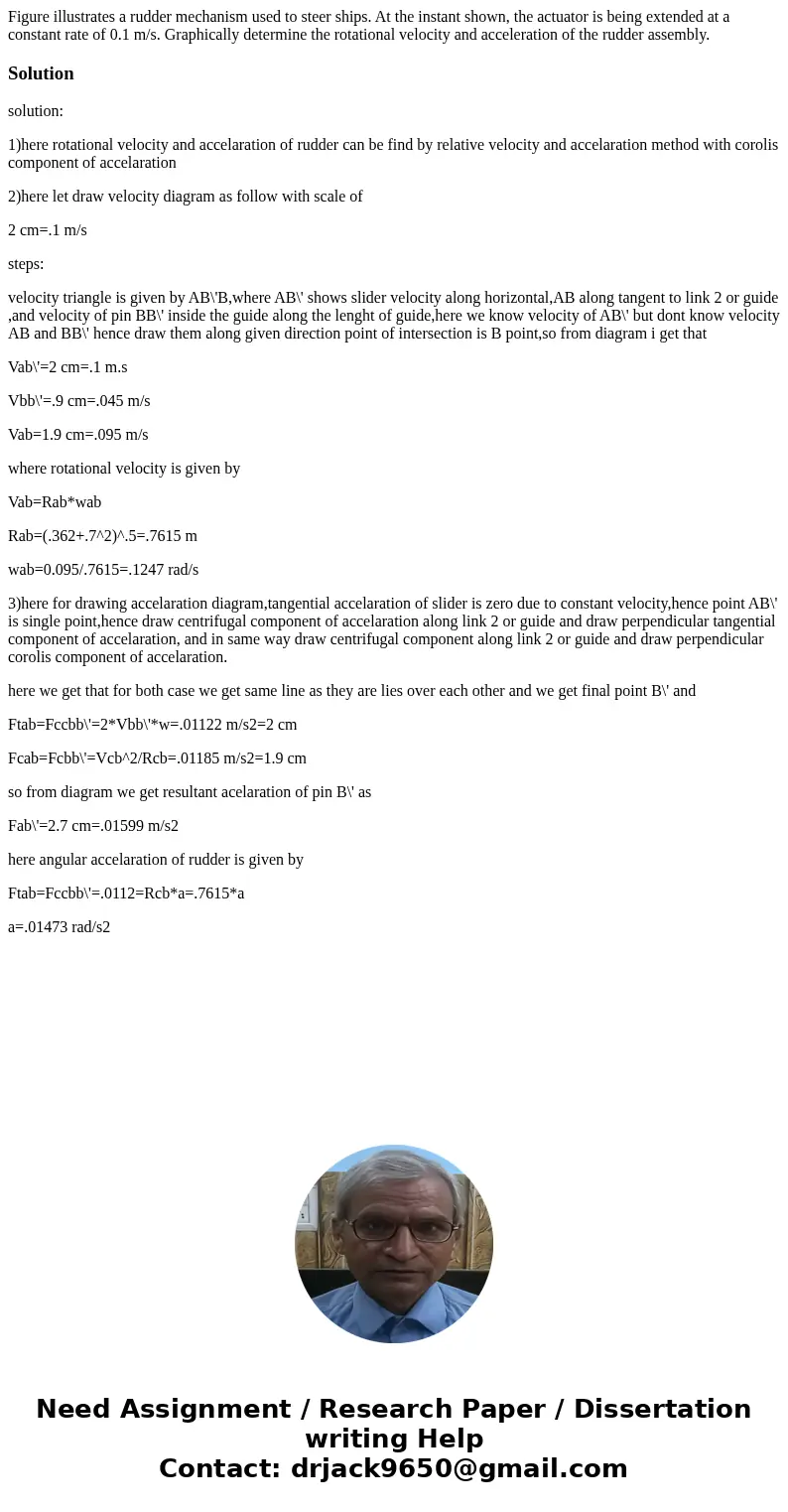Figure illustrates a rudder mechanism used to steer ships At
Solution
solution:
1)here rotational velocity and accelaration of rudder can be find by relative velocity and accelaration method with corolis component of accelaration
2)here let draw velocity diagram as follow with scale of
2 cm=.1 m/s
steps:
velocity triangle is given by AB\'B,where AB\' shows slider velocity along horizontal,AB along tangent to link 2 or guide ,and velocity of pin BB\' inside the guide along the lenght of guide,here we know velocity of AB\' but dont know velocity AB and BB\' hence draw them along given direction point of intersection is B point,so from diagram i get that
Vab\'=2 cm=.1 m.s
Vbb\'=.9 cm=.045 m/s
Vab=1.9 cm=.095 m/s
where rotational velocity is given by
Vab=Rab*wab
Rab=(.362+.7^2)^.5=.7615 m
wab=0.095/.7615=.1247 rad/s
3)here for drawing accelaration diagram,tangential accelaration of slider is zero due to constant velocity,hence point AB\' is single point,hence draw centrifugal component of accelaration along link 2 or guide and draw perpendicular tangential component of accelaration, and in same way draw centrifugal component along link 2 or guide and draw perpendicular corolis component of accelaration.
here we get that for both case we get same line as they are lies over each other and we get final point B\' and
Ftab=Fccbb\'=2*Vbb\'*w=.01122 m/s2=2 cm
Fcab=Fcbb\'=Vcb^2/Rcb=.01185 m/s2=1.9 cm
so from diagram we get resultant acelaration of pin B\' as
Fab\'=2.7 cm=.01599 m/s2
here angular accelaration of rudder is given by
Ftab=Fccbb\'=.0112=Rcb*a=.7615*a
a=.01473 rad/s2

 Homework Sourse
Homework Sourse